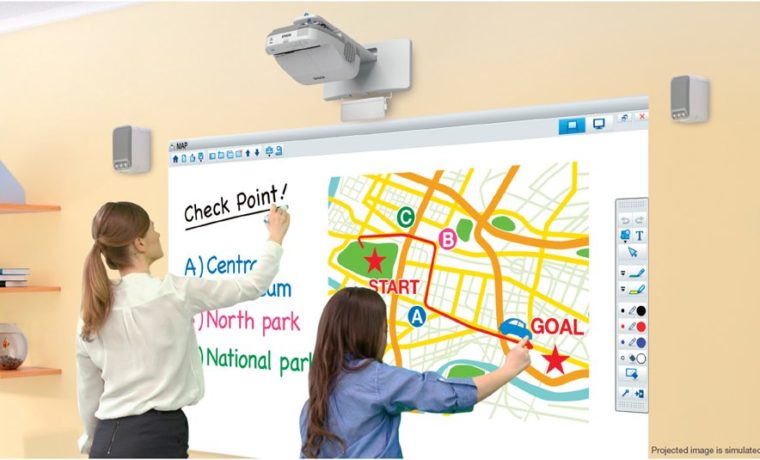Certainly, ambient light isn’t the huge problem it was a decade ago, as most of today’s projectors are 2-5 times as bright. Still, it’s an important factor to consider in purchase decisions. Of course, you definitely need to keep sunlight from hitting a screen. That always spells disaster! Technically, there’s even an exception to that, with certain specialized light absorbing screens, but, even with those, you really do not want sunlight hitting your screen.
As long as the sunlight (should you have to deal with uncovered windows) hits elsewhere in the room, most of today’s projectors (except pico and pocket LED projectors) are should be bright enough to do the job.
There are fifteen projectors in this year’s report, the least bright claims 3,000 lumens! Figure most 3,500 to 4,500 lumen projectors – the bulk of projectors on the market – can handle a typical classroom, conference room, or training room that is fully lit with fluorescent lighting, at least on 50 to 72″ diagonal screens, which are typical. At the worst, turn off half the banks of lights.
That's for typical K-12 classrooms and small university ones. When you move up to larger higher education classrooms – those lecture halls – with 100 to 400 students, brighter projectors are called for, but not all that brighter. A top rated 4,000 lumen projector with high color lumen output should be enough for that typical lecture hall, but in the largest, 5,000 to 8,000 lumens might be nice. In this report, we'll refer to the brighter more capable ones typically with one or more of these terms: larger venue or large venue projectors, or even higher education projectors.
I repeat this every year: Basically, 10-15 years ago the phrase most commonly associated with 2,000 lumen projectors was “auditorium projector.” Now, the term for 2,000 lumens might just be “below entry level” in terms of brightness, with only LED pocket and pico projectors claiming less (a lightweight 2,000 lumen projector back in 2001 would be 35 to 50 pounds. Today, a lightweight 3,000 lumen projector might be 3.5 pounds.
Regardless of how you look at it, brighter is better, just don’t put a lot of faith in expecting to go from a 2,500 to 3,200 lumen projector, in terms of making a huge jump in brightness – that’s only a slight difference, such as going from full power to eco-power on most projectors.
With that thought in mind, also consider:
One big advantage of spending more for a brighter projector is that you can run it in eco-mode, saving money by increasing lamp life. Compare that to running a similar projector, say, selling for $300 less, with 2/3 to 3/4 the overall brightness, one that is as bright at full power, as the brighter projector in eco-mode.
Most lamps cost $150 to $400 a piece retail, with the lamps for the highest powered projectors typically costing more. Some companies though, have education lamp pricing from under $100. The lowest education price we’ve seen to date is now $49, a lamp for certain Epson projectors (last year it was $79!). Today, the typical life is 2,500 hours to 4,000 hours at full power, and 4,000 hours to 8,000 hours in eco (the lower lamp hour claims tend to be for lamps for bright, large venue projectors, but also in some portables). With most under $1,000 projectors, expect lamp prices to range from that rock bottom $49 to between $99 and $199. Of course, there are exceptions.
In the long run – several years – you might have to buy a second and then a third lamp if running at full power, before you even need a second lamp for a brighter projector running in eco-mode. That said, few teachers will use their projector heavily enough to require a lamp change in the first 2-3 years.
What I’m saying is you might find it less expensive in the long run with a brighter projector, if you can stick to Eco mode (that way, you would have quieter operation too). But, there are no guarantees. That could be a factor unless the projector is getting low usage – say less than 10 hours a week, in which case today’s lamps could last longer than 10 years making lamp replacement costs a total non-factor!



